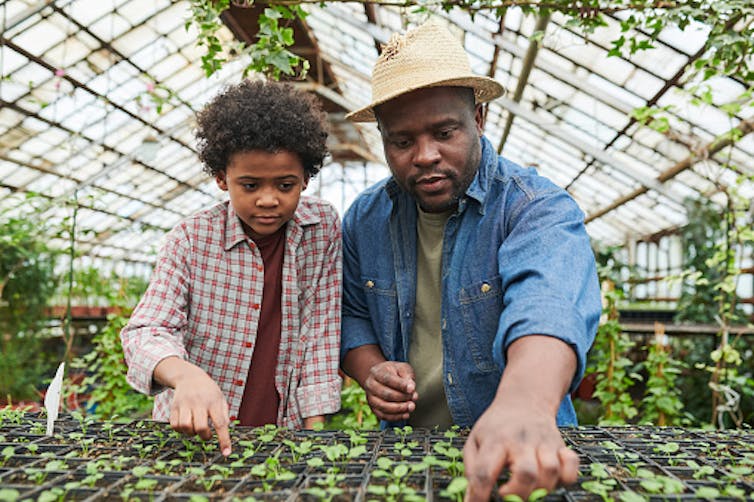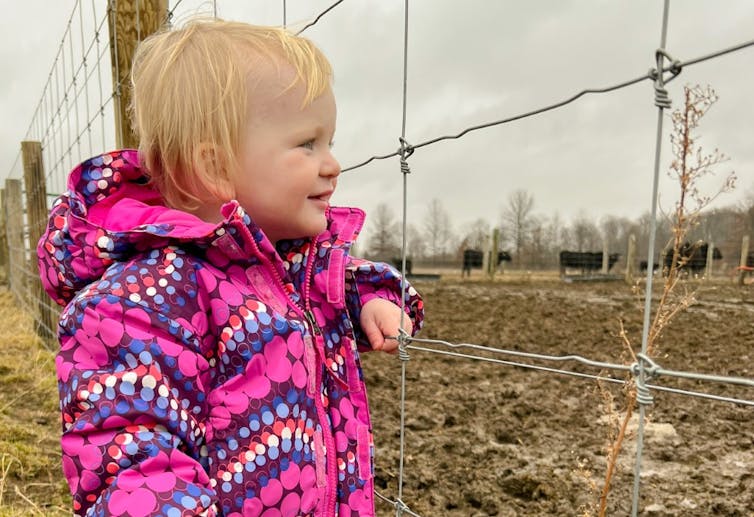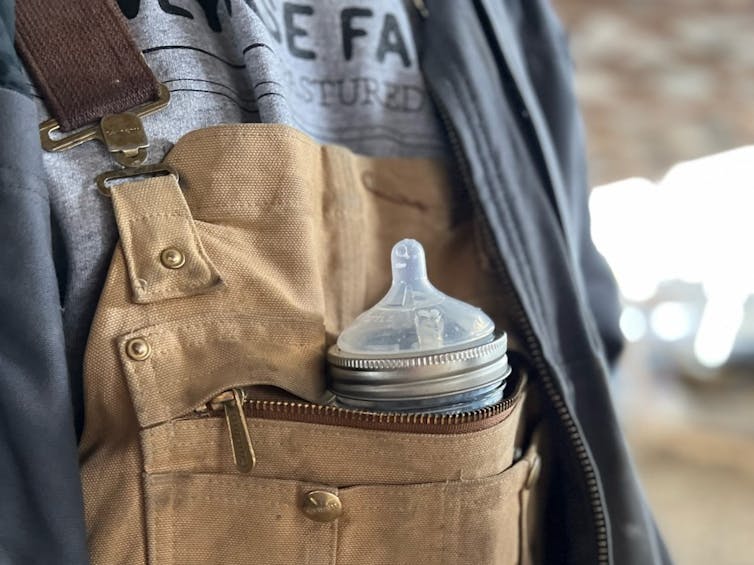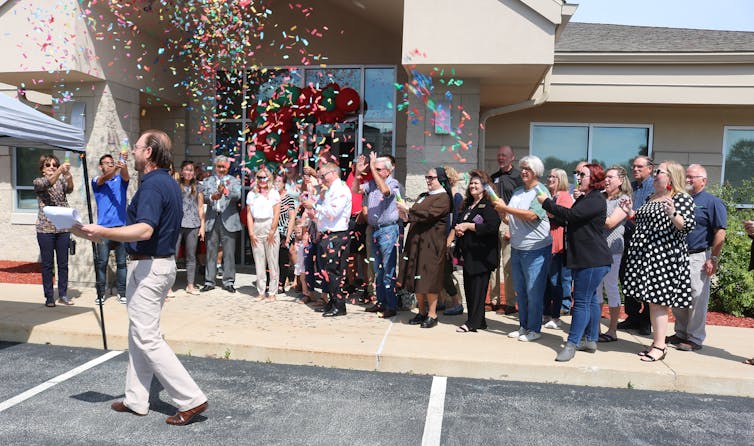Kerissa and Charlie Payne are beginning farmers living their dream of raising two daughters on a farm in Central Ohio. By conventional measures, their livestock farm, Covey Rise, is a success. Yet, below the surface, the challenge of finding quality affordable child care has kept their business from growing and reaching its full potential.
“It feels like we’re always split between keeping the kids safe on the farm, being a good parent, and the needs of the farm,” Kerissa Payne said.
The United States has a child care crisis, yet the issue remains largely invisible in the farm sector. For too long, the nation has ignored the fact that farm parents are working parents who must juggle child care while working what can be one of the most dangerous and stressful jobs in America.
But as Bob Dylan might say, “The times they are a-changin’.”
For the first time in history, the two largest farm organizations, the American Farm Bureau and the National Farmers Union, have included child care in their policy priorities for the 2023 federal farm bill, a massive spending bill that passes every five years. As rural researchers, our conversations with policymakers suggest that there may be bipartisan support to help increase access to affordable quality rural child care as lawmakers hear from families.

Over the past 10 years, we have interviewed and surveyed thousands of farmers across the country to understand how child care affects farm business economic viability, farm safety, farm families’ quality of life and the future of the nation’s food supply. What we found debunks the three most common myths that have kept child care in the shadows of farm policy debates and points to solutions that can support farm parents.
Myth #1: Child care is a not a problem in the farm sector
Despite hearing from countless parents about their challenges with child care, the issue has been largely invisible among farm business advisers, farm organizations, and federal and state agricultural agencies. When we were interviewing advisers and decision-makers about this topic early in the COVID-19 pandemic, common first reactions we heard were: “child care is not an issue for farmers,” “we have never thought to ask about it” and “does it affect the farm business?”
Nationally, three-quarters (77%) of farm families with children under 18 report difficulties securing child care because of lack of affordability, availability or quality. Almost half (48%) report that having access to affordable child care is important for maintaining and growing their farm business.
Our research has consistently found child care is an issue that affects all of agriculture regardless of farm size, production system or location.

Access to child care is especially acute in rural areas, where even before COVID-19, 3 in 5 rural communities were categorized as child care deserts. The high cost of child care left the Paynes in a position familiar to many Americans – they make too much to qualify for child care support, but they don’t make enough to afford the type of quality child care they want.
The Paynes’ experience reflects what we consistently hear from farmers: Child care affects the trajectory of the farm business and the ability of a farm family to stay on the land.
Myth #2: Farmers don’t want or need help with child care because they have family help
Perhaps one of the biggest myths we have heard is that farm parents want to do it all on their own, and when they need help, they have family members who can watch the children.
This might work if relatives are nearby, but almost half of farmers we surveyed said their own parents were too busy to help with child care, had died or were in declining health.
Often, farm parents have had to move away from family and friends to find affordable land. These parents consistently said the lack of community made it harder to take care of their children.
Farmers have repeatedly said that it is a myth that they don’t want help taking care of children. The problem is that they cannot find or afford help.

Myth #3: Children can just come along when doing farm work
While wonderful places to grow up, farms can be dangerous, with large equipment, electric fencing, large animals, ponds and other potential hazards. Every day, 33 children are seriously injured in agricultural-related incidents, and every three days a child dies on a farm.
Farm parents we spoke with recounted stories of children who died after falling out of a tractor, drowned when they fell into a pond, or were maimed by a cow. Almost all farm parents – 97% – have worried that their children could get hurt on the farm.
In our research, parents talked about constantly weighing the risks and benefits of having children on the farm. One farmer had hoped his young son would “be my little sidekick and do everything I did.” However, the reality was different. He admitted he “didn’t think about a baby not being able to be out in the sun all day,” and he was struggling to balance care work and farm work. The government has spent millions of dollars on farm stress programs, yet child care’s role in creating and exacerbating farm stress is rarely talked about.

The Paynes asked a question we heard from many other parents: “Why is farming the only occupation where you are expected to take your kids to work?”
Farm safety programs have traditionally focused on education. However, our research shows that farm parents are highly aware of the risks. Instead of education, parents explain that they need resources to help with child care – 86% said they sometimes bring children to the farm worksite because they lack other options.
Finding solutions to support child care
There is no one-size-fits-all solution to America’s child care problems, particularly for farm parents, who are juggling raising their own families while working to feed and clothe the nation.
In our research, farmers spoke about a wide range of solutions: free or affordable quality child care, before- and after-school programs, better parental leave policies for wage and self-employed workers, financial support for safe play areas on the farm, college debt relief, free college tuition and more affordable health insurance.
Seeing his farm community struggling with child care, Adam Alson, a corn and soybean farmer in Jasper County, Indiana, co-founded Appleseed Childhood Education, a nonprofit dedicated to creating care and education opportunities for children from birth through high school. It opened its first early learning center in 2023 with a mix of public and private support.

Alson sees investing in child care as a path to attracting and retaining young farmers and families, and a strategy for growing and retaining the rural workforce.
“Throughout our country’s history, we have valued the importance of our rural communities and have invested in them and in sectors where the market does not go,” he said. “In 2023, quality child care is one of those sectors.”
As one Ohio farmer put it: “If America wants farmers, farm families need help with child care.”
Shoshanah Inwood receives funding from the U.S. Department of Agriculture and Centers for Disease Control and Prevention.
Florence Becot receives funding from the CDC National Institute for Occupational Safety and Health.
This article was originally published on The Conversation. Read the original article.







